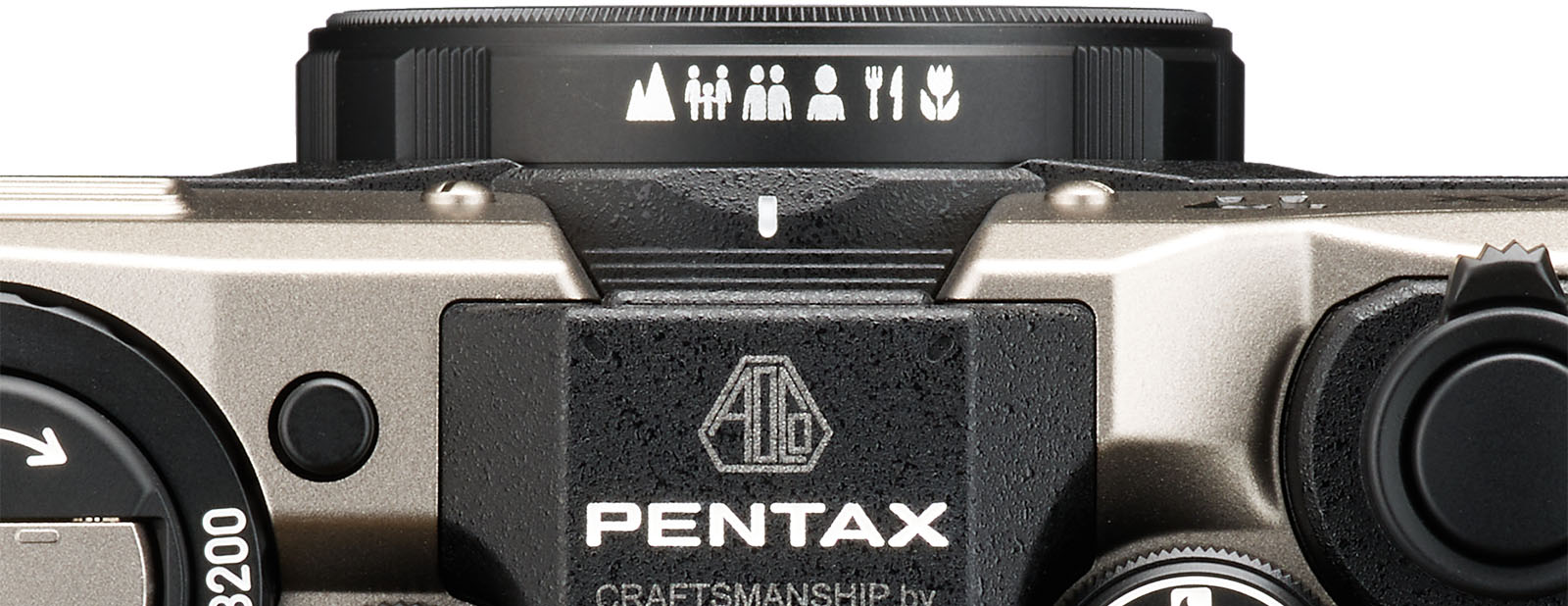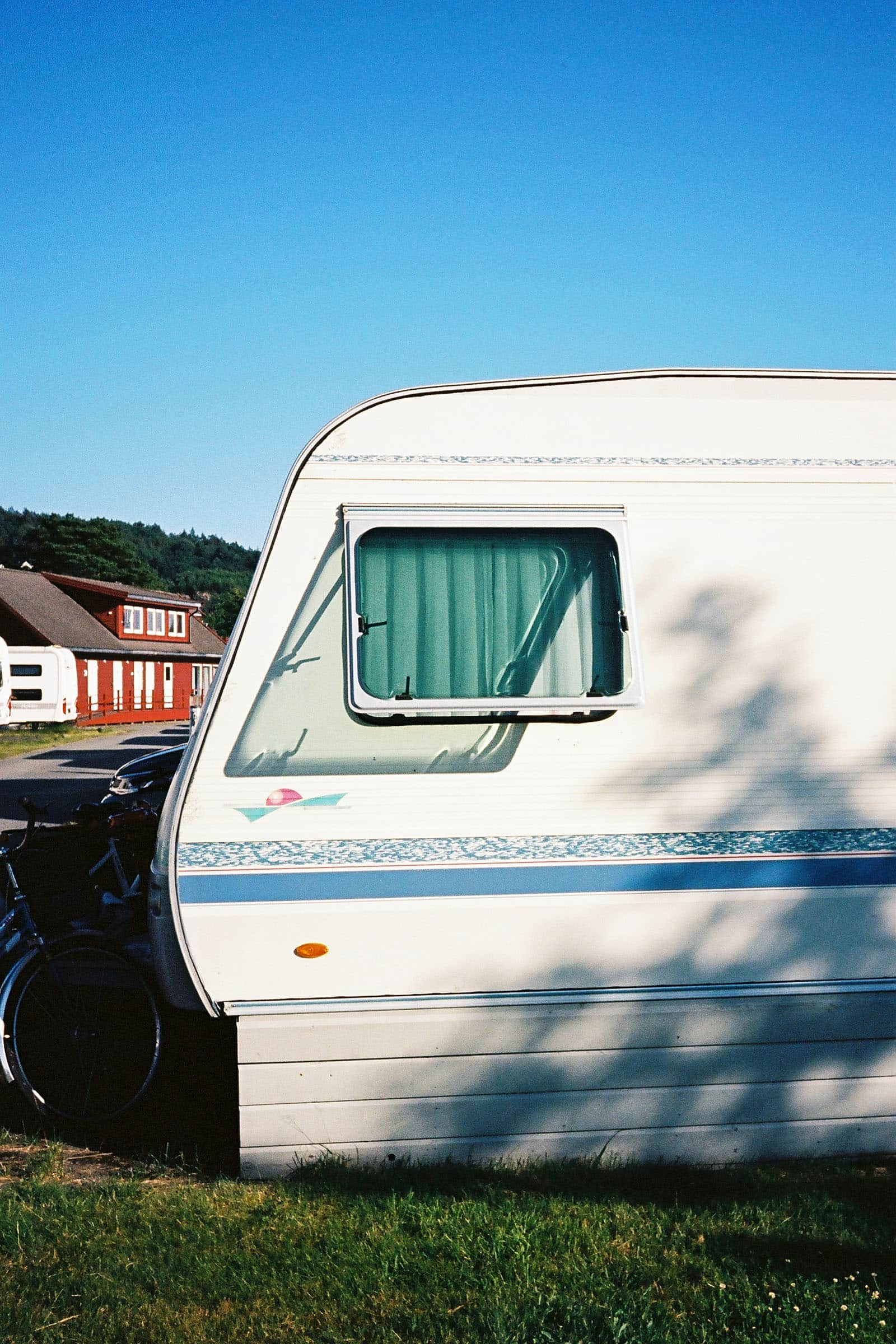What nobody believed would happen, has happened! Approximately 20 years after the major camera manufacturers launched their last cameras for film photography, Pentax has entered the market with a completely new camera – Pentax 17!
When the previous analogue Pentax camera was launched in 2003 (Pentax *ist), most in the photography industry believed it marked the beginning of the end for cameras that capture light with film. The digital wave seemed poised to eradicate analogue cameras completely, with film rolls becoming something one wouldn't easily find, except as old and outdated. Many thought so. In 2024, we now hold in our hands a brand-new analogue camera – Pentax 17. What happened?
Refused to die
Despite several years of closures, bankruptcies, and plummeting sales, the interest in film photography persisted. From around 2012, a development began that hardly anyone had foreseen. Film roll sales started to increase, by a substantial 20% annually (approximate figure). Globally, in Europe and in the Nordic countries. "A flash in the pan," many thought. However, this turned out not to be the case. The increase continued year after year. Now – in 2024 – we can look back on a period of 12 years where this approximately 20% annual growth has endured. More than just "a flash in the pan" – or a passing trend. This backdrop led to the appearance of Pentax 17 for sale in camera stores worldwide this summer.
Pentax film photography project
In 2022, Pentax (actually Ricoh Imaging) announced the start of a Film Photography Project with the goal of developing several analogue cameras in the upcoming years. At that time, very few details were available, but hints emerged that the first camera would be a compact camera, have manual film winding (and rewinding), and use 135 film. Pentax brought in retired camera engineers to educate current camera developers on designing film winding mechanisms and shutter speeds in an analogue camera.
The pentax 17 concept
I've had the opportunity to test Pentax 17 for a couple of weeks and will share some user experiences here. But first, a bit about the concept of this camera.
Pentax 17 is a so-called half-frame camera, which was surprising (and perhaps a bit disappointing) for many film photography enthusiasts. "Half-frame" means you get 48 or 72 exposures on a 135-film roll, as opposed to the usual 24 or 36. The negative format is thus 17x24 millimeters. Half-frame is not new in 135 film cameras. Legendary cameras like the Olympus Pen, Ricoh Auto Half, Yashica 72E, and Canon Dial, all from the 1960s, used this negative format. Interestingly, there has never been a Pentax camera in half-frame format before.
When Pentax announced the Film Photography Project in 2022, expectations were high regarding the camera design that would be unveiled. Perhaps unrealistically so.
A simple camera with a good lens
Technically, Pentax 17 is a relatively straightforward camera, albeit more advanced and with more user settings than any of the previous half-frame cameras made. It features manual focusing without distance measurement (known as zone focusing), automatic adjustment of aperture and shutter speed (utilizing the built-in light meter behind the lens), and is partly constructed of plastic materials. But as everyone knows, the lens is the most critical factor for the image quality you can achieve with an analogue camera. Pentax has done a very good job here. The lens is based on the excellent 32mm f/3.5 wide-angle lens found on the Pentax Espio Mini (launched in 1992). Since Pentax 17 has approximately half the film format size compared to the Espio Mini, the lens was adjusted to a focal length of 25mm (equivalent to 37.5mm for a camera with a 24x36mm negative). The maximum aperture remains f/3.5.
Advanced multicoating
There are many factors influencing the image quality you can achieve with a lens. The Pentax 17 lens offers high detail reproduction, indicating excellent glass quality and successful optical design. Additionally, anti-reflection treatment is essential for achieving good contrast and natural color reproduction. It was a pleasant surprise that Pentax chose to equip this lens with what's known as HD multicoating. Pentax introduced HD multicoating for its professional lenses from 2023, as a development of the renowned SMC multicoating with a history spanning over 50 years. I chose to shoot my first roll in Pentax 17 with Kodak Ektar 100. This is the sharpest and finest-grained color film in today's market, ideal for evaluating both sharpness and colors. Although I haven't conducted a formal camera test, the images presented here will give an idea of what to expect from Pentax 17.

Summer in Tønsberg! Pentax 17 with HD Pentax Lens HF 1:3.5/25mm delivers sharp images with good contrast and accurate color reproduction. The photo was taken with Kodak Ektar 100 and developed/scanned at Stavanger Foto.
Many automatic choices
It's easy to criticize Pentax 17 for lacking entirely manual settings, but this applies to almost all moderately priced analogue compact cameras since the early 1980s. Well-known classics like Yashica T4, Olympus Mju-ii, and Pentax Espio Mini only offer full automation without opportunities for manual overrides. This is where Pentax 17 stands out. Pentax/Ricoh Imaging has made an effort to provide users with a variety of automatic options to influence the final image.

Pentax 17 offers a total of 5 automatic settings plus Bulb (B). The options marked in yellow indicate the built-in flash is in use. The white alternatives imply photography without flash. When on Auto, the camera decides whether to use flash.
Even though you can't adjust aperture or shutter speed manually, Pentax 17 offers automatic functions that help you create the visual expression you're aiming for. When you set the program dial to Auto, everything operates automatically regarding exposure settings and flash. If you desire fully automatic exposure, you set the dial to P, much like with an analogue SLR camera or a digital one. The camera provides two additional automatic choices, where one lets the camera choose the widest possible aperture. This option is labeled, somewhat misleadingly, Bokeh. The other automatic setting does the exact opposite – the camera uses the longest possible shutter speed based on the film's sensitivity (ISO) and available light. The last program selection without flash function is B for Bulb. In this mode, the camera sets the aperture to full open, and the shutter speed becomes as long as the time you hold the shutter button down. Here, Pentax's wireless remote control might also come in handy. And a tripod! (Pentax 17 features a standard ¼” tripod socket on the bottom plate.)
Additionally, there are several automatic choices where the camera utilizes the built-in flash.

Viking ship under construction in Tønsberg. The image on the left is taken with the P exposure program. I would have preferred a bit more depth of field here, and with an automatic program for a longer shutter speed, the camera would have chosen a smaller aperture. However, I might have risked the shutter speed being too long to capture a sharp image. The image on the right is taken with full automation and flash with a short shutter speed. There were many reflections on the hull, and I would likely have obtained a more satisfying result without the flash.
Manual focusing
Compact cameras for 35mm film have three different ways to adjust focus: autofocus, rangefinder focus (viewfinder camera), or zone focus. The first type is widely known to most modern camera users. Rangefinder focusing is associated with cameras like the Leica M series, Soviet Zorki cameras, and cameras from Contax, Nikon, and Canon in the 1950s. Pentax 17 is equipped with zone focusing, meaning you use symbols positioned on the lens's top to adjust the focus distance. These symbols are also reflected in the viewfinder image. Therefore, you need to estimate the distance yourself. The lens's underside shows the corresponding distances of these symbols.

The six symbols on the lens's top show you how to set the focus distance. These symbols are also reflected in the camera's viewfinder.

The focus distance scale, located on the underside of the lens, shows the set distance in both meters and feet. Notably, the close range is remarkably short, measuring at 0.25 meters.
Diptych
As mentioned at the beginning, the negative format is approximately half the size of a standard 135 film negative. This means you'll get two portrait-format images side by side on a standard 10x15 cm enlarger print from a photo lab. This introduces an exciting and creative opportunity to craft small stories consisting of two images presented together. This concept is familiar in painting and photography as diptych. A diptych is an artistic or literary work consisting of two parts, typically side by side. It can be two paintings, photographs, prints, or even two parts of a novel or poetry compiled to be displayed or experienced together.
The images featured here were taken in portrait format, achieved by holding the camera in a standard horizontal position. However, there's nothing stopping you from taking landscape-format images. In that case, the images would be positioned above and below each other on a standard lab enlargement.
If you have your enlarger in a darkroom, a flatbed scanner capable of scanning film, or equipment for photographing your negatives, you have the opportunity to create stories with more than two images. Here lies the potential for triptychs and quadtychs.

Since Pentax 17 is a half-frame camera, you can take portrait-format images that will appear side by side on a standard 10x15 cm print from a photo lab. This presents creative opportunities and exciting storytelling techniques. The photo was taken with Kodak Ektar 100 and developed/scanned at Stavanger.
Advantages and disadvantages
+ You can enjoy the pleasure of film photography
+ You get 72 images on a roll that would typically yield 36
+ Lightweight and relatively compact camera
+ Easy to use
+ Lens that renders sharp images with good contrast
+ You can use diptych as a storytelling technique by connecting your story as you capture the images, not afterward
- Images may be slightly grainier compared to a camera with a 24x36mm negative
- No manual exposure settings
- No distance measurement with manual focus
- Doesn't work with a traditional mechanical cable release
Applications
Pentax 17 is primarily a camera for photo enthusiasts who prefer film photography and are more interested in capturing life's moments than fussing with camera settings. A great camera for playful and casual photographers who want to snap pictures for everyday and special occasions, ending up with photos that exude a genuine retro feel. But make no mistake, the camera can also be used for much more.
Published with permission, original blog post can be found on Bjørn Joachimsen's webiste.
Photos by Bjørn Joachimsen.






